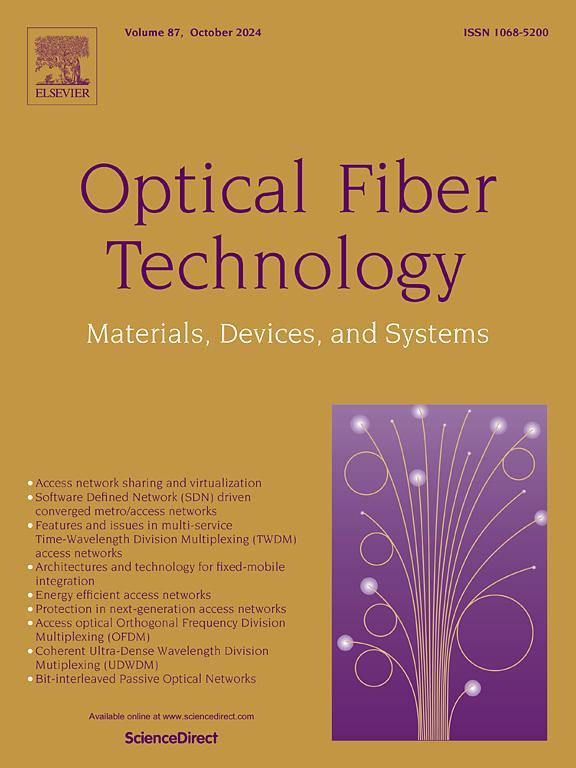Simultaneous measurement of salinity and temperature based on ring-shaped microfiber resonator
IF 2.7
3区 计算机科学
Q2 ENGINEERING, ELECTRICAL & ELECTRONIC
引用次数: 0
Abstract
With the increasing intensity of ocean development activities and the impact of global climate change, accurate measurements of seawater salinity and temperature have become essential for understanding ocean dynamics and monitoring the health of marine ecosystems. This study presents an optical sensing platform that employs a microfiber ring resonator (MRR) configuration for the concurrent detection of salinity and temperature. The sensor leverages the inter-mode interference of the ring-shaped microfiber structure and the resonance effect of the resonator ring to facilitate real-time monitoring of both parameters. As salinity and temperature change, the interference and resonance wavelengths shift either redward or blueward due to changes in the refractive index. By establishing a linear correlation between spectral displacement and variations in salinity and temperature, a transmission matrix is created to concurrently obtain the salinity and temperature of marine water samples. Experimental results indicate that the microfiber inter-mode interference exhibits sensitivities of 390 pm/‰ and 810 pm/°C for salinity and temperature, respectively. The resonance ring effect yields sensitivities of 260 pm/‰ and 420 pm/°C for salinity and temperature, respectively. The salinity resolution reaches up to 0.01 ‰, while the temperature resolution achieves up to 0.005 °. Furthermore, the sensor offers advantages such as a simple structure, enhanced electrical safety, and effective protection against electromagnetic interference.
基于环形微光纤谐振器的盐度和温度同步测量
随着海洋开发活动的加剧和全球气候变化的影响,准确测量海水盐度和温度对于了解海洋动态和监测海洋生态系统的健康至关重要。本研究提出了一种光学传感平台,该平台采用微光纤环形谐振器(MRR)配置,用于同时检测盐度和温度。该传感器利用环形微光纤结构的模间干扰和谐振器环的共振效应,实现对这两个参数的实时监测。随着盐度和温度的变化,由于折射率的变化,干涉和共振波长或向红或向蓝移动。通过建立光谱位移与盐度和温度变化之间的线性关系,建立传输矩阵,同时获得海水样品的盐度和温度。实验结果表明,微光纤模间干涉对盐度和温度的灵敏度分别为390 pm/‰和810 pm/℃。共振环效应对盐度和温度的灵敏度分别为260 pm/‰和420 pm/°C。盐度分辨率可达0.01‰,温度分辨率可达0.005℃。此外,该传感器具有结构简单、电气安全性强、抗电磁干扰能力强等优点。
本文章由计算机程序翻译,如有差异,请以英文原文为准。
求助全文
约1分钟内获得全文
求助全文
来源期刊

Optical Fiber Technology
工程技术-电信学
CiteScore
4.80
自引率
11.10%
发文量
327
审稿时长
63 days
期刊介绍:
Innovations in optical fiber technology are revolutionizing world communications. Newly developed fiber amplifiers allow for direct transmission of high-speed signals over transcontinental distances without the need for electronic regeneration. Optical fibers find new applications in data processing. The impact of fiber materials, devices, and systems on communications in the coming decades will create an abundance of primary literature and the need for up-to-date reviews.
Optical Fiber Technology: Materials, Devices, and Systems is a new cutting-edge journal designed to fill a need in this rapidly evolving field for speedy publication of regular length papers. Both theoretical and experimental papers on fiber materials, devices, and system performance evaluation and measurements are eligible, with emphasis on practical applications.
 求助内容:
求助内容: 应助结果提醒方式:
应助结果提醒方式:


